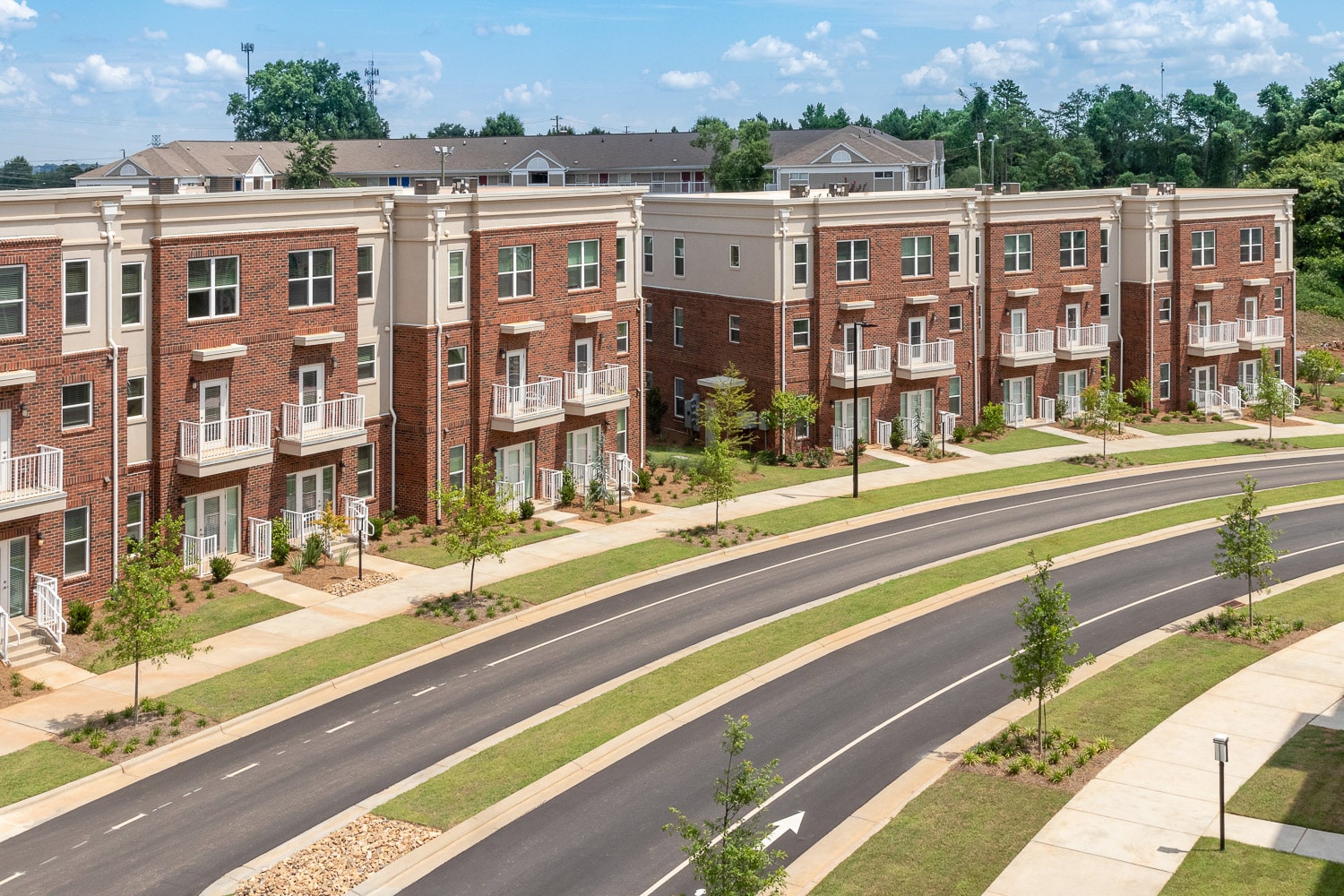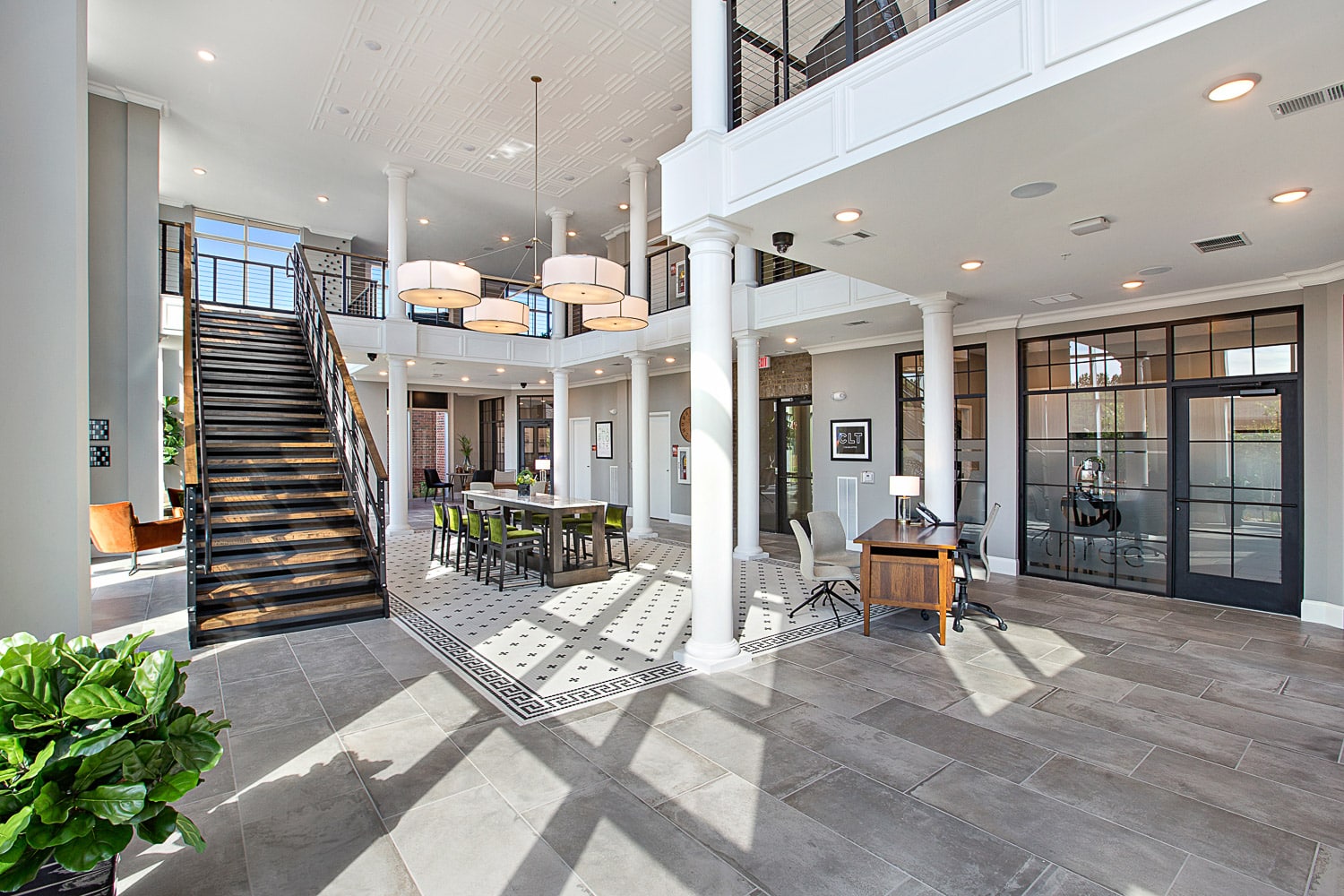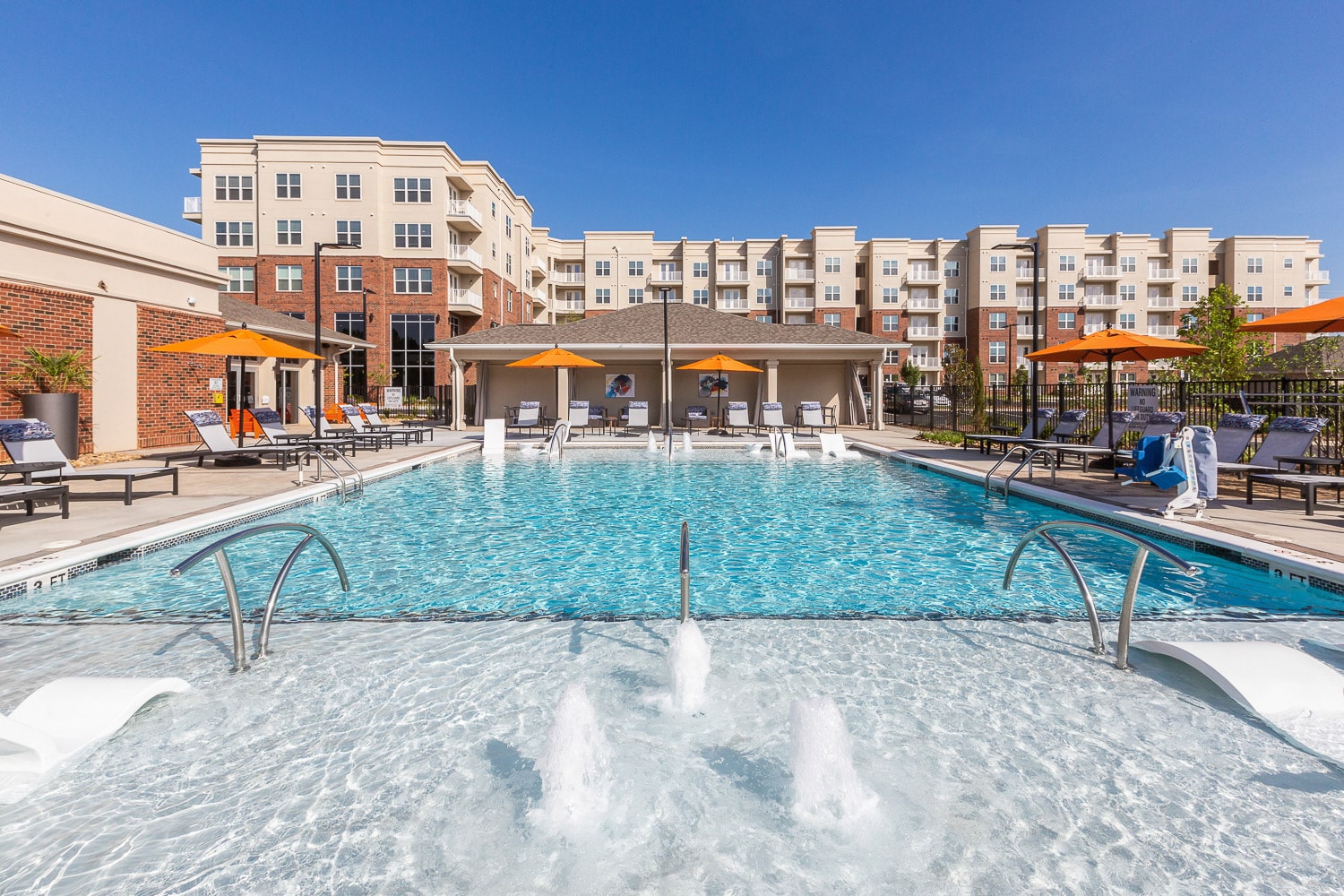At the 8th stop on Charlotte, North Carolina’s newly opened northern LYNX commuter rail line lies V & Three, a multi-family development with a name that cleverly mashes up Roman and written English numerals that we’re proud to say we had a hand in bringing to life.

A full-blown transit-oriented development (TOD), V & Three consists of four apartment buildings, three townhome buildings, two accessory buildings (a luxurious clubhouse and a pet spa/maintenance building) and three garages, one with dedicated bike storage. Perched on a steep incline near UNC’s campus, these luxury apartments are a stunning example of the changing landscape of multi-family in the U.S. – amenity-rich, full of high-end finishes, and planned with intentional density and connectivity.
After some back and forth between the city and the owner, we arrived upon a design scheme that was a bit out of the ordinary for the wooded plot V & Three occupies. Where traditional suburban residential developments tend to focus on large yards, spread out buildings and prominent green space, this property would follow more urban principles. Buildings were arranged as “walls of residences” placed close to sidewalks, more like city brownstones than small-town apartment complexes. Flat roofs and a mix of modern-industrial and safely traditional brick give the facades a more citified feel. Ample green space is scattered throughout the property, with meandering paths carved across the building facades. The most unorthodox feature is a full-on public boulevard running through the property. Where most suburban multi-family is by design a closed-off island of interior streets with one or two entrances, V & Three is planned to be entirely integrated into its surrounding urban landscape.


We faced challenging topography on this project – a near 80-foot drop from one side of the property to the other created issues in positioning and constructing the large buildings. The solution: buildings that literally step down the hill with a natural ease that doesn’t interrupt the peaceful flow of the property.